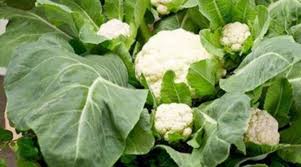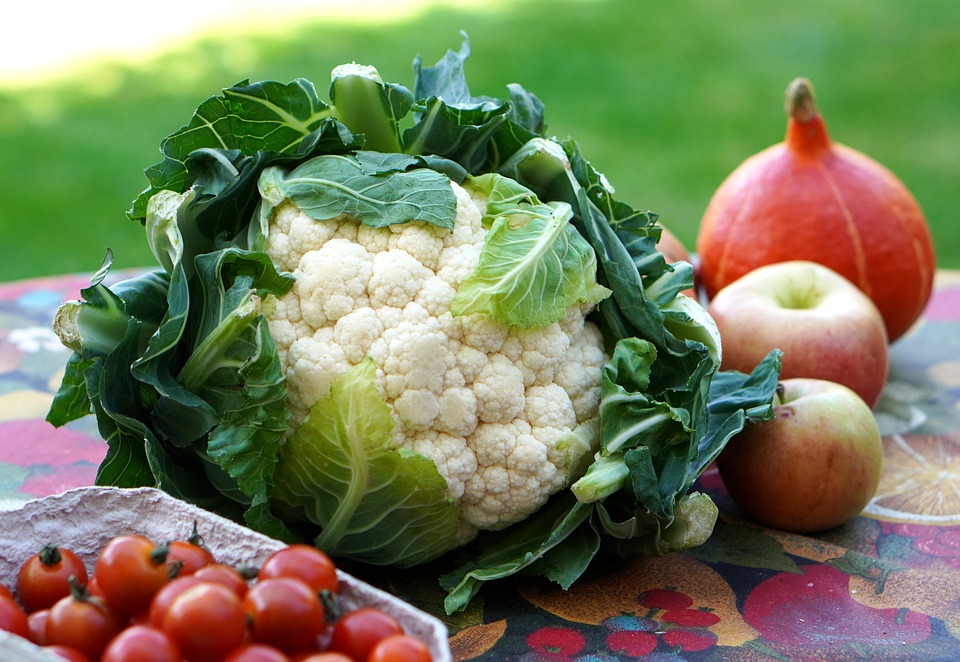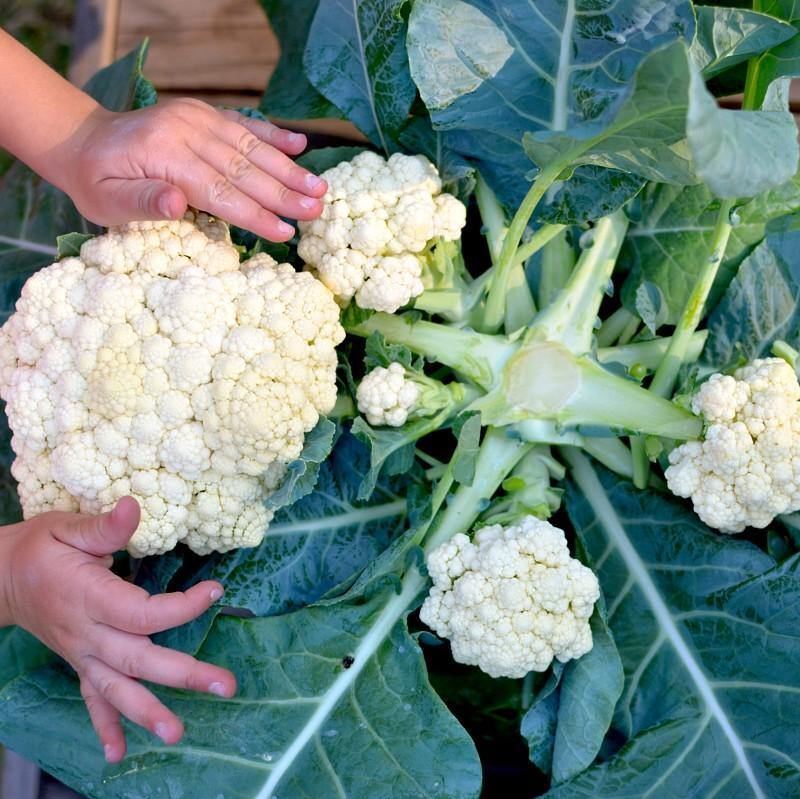Cauliflower, with its beautiful white florets and mild, slightly nutty flavor, is a popular vegetable enjoyed around the world. Home gardeners often wonder if they can get multiple harvests from a single cauliflower plant, similar to some leafy greens. This article dives into the fascinating world of cauliflower growth and explores the possibilities of secondary harvests.
Understanding the Nature of Cauliflower: An Annual Plant
Cauliflower belongs to the Brassicaceae family, also known as the cruciferous vegetables. This family includes other favorites like broccoli, cabbage, and Brussels sprouts. Unlike some perennial vegetables that return year after year, cauliflower is an annual plant. This means it completes its entire life cycle, from seed to flower to seed production, within a single growing season.
A cauliflower plant consists of three main parts:
- Head: The head, also called the curd, is the most prized part of the plant. It’s a compact mass of white florets that resembles a brain.
- Leaves: Large, broad leaves surround the head, providing shade and protection.
- Stem: A thick, sturdy stem connects the head and leaves to the root system.
The Main Harvest: Enjoying the Cauliflower Crown
The primary purpose of growing cauliflower is to harvest the head. When the head reaches maturity, it becomes firm and white, with tightly packed florets. The ideal size for harvesting depends on the variety, but generally, a cauliflower head should be 6-8 inches in diameter.
Here are some tips for harvesting the main head of cauliflower:
- Timing is Key: Look for a white, tightly packed head with no sign of yellowing or flowering. If the florets begin to separate or turn yellow, the head is past its prime.
- Sharp is Best: Use a sharp knife to cut the stem just below the head. Leave about 1-2 inches of the stem attached to the plant.
- Protect the Remaining Plant: After harvesting the head, tie the large leaves together loosely over the remaining stem. This protects the plant from sunburn and encourages any potential side shoot development.
Once the main head is harvested, the question arises: can you get more cauliflower from the same plant?

Secondary Harvest: A Chance for Bonus Florets
Unlike its close relative, broccoli, which readily produces side shoots after the main head is harvested, cauliflower is less likely to offer a substantial secondary harvest. This is because cauliflower focuses its energy on developing the central head, leaving less for lateral growth.
However, there’s still a chance for some additional cauliflower florets after the main harvest. Here’s what you can expect:
- Side Shoots: Small shoots may emerge from the leaf axils (where the leaf meets the stem) after the main head is removed. These shoots may produce smaller cauliflower florets, but they won’t be as large or tightly packed as the primary head.
- Patience is Required: Developing these secondary florets can take several weeks, so be patient and keep the plant well-watered and fertilized.
- Managing Expectations: The secondary harvest will likely be much smaller than the main head. Consider it a bonus rather than a replacement.
Making the Most of Your Cauliflower Plant: Beyond the Head
While the main head is the most prized part of the cauliflower plant, don’t discard the remaining leaves and stem! These parts are also edible and can be used in various culinary ways.
- Cauliflower Leaves: The large cauliflower leaves are surprisingly delicious. They have a slightly bitter taste similar to kale and can be steamed, sautéed, or added to soups and stews.
- Cauliflower Stem: The thick stem is also edible and can be chopped and roasted or used to add flavor to vegetable broths.
Here are some recipe ideas for using cauliflower leaves and stems:
- Sautéed Cauliflower Leaves with Garlic and Lemon: A simple and flavorful side dish.
- Creamy Cauliflower Stem Soup: A comforting and nutritious soup perfect for a chilly day.
- Roasted Cauliflower Florets and Leaves: A healthy and colorful roasted vegetable dish.

Optional: Saving Seeds for Future Planting
If you’d like to continue your cauliflower adventure beyond the current season, you can save seeds from your mature cauliflower plant. Here’s how:
- Allow a few secondary florets to mature fully and develop yellow flowers.
- The flowers will eventually turn brown and form seed pods. Allow the pods to dry completely on the plant.
- Once the pods are dry and brown, carefully extract the tiny black seeds.
- Store the seeds in a cool, dry place for future planting.
Important Note: Saving seeds is only recommended for open-pollinated cauliflower varieties.
Factors Affecting Secondary Harvest Potential
While the chances of a significant secondary harvest with cauliflower are lower compared to broccoli, several factors can influence the likelihood of getting some bonus florets:
- Variety: Some cauliflower varieties are more prone to producing side shoots than others. Look for varieties known for their bolting resistance, as bolting (flowering) can hinder side shoot development.
- Climate: Cauliflower thrives in cool weather. If your region experiences hot summers, the plant may be stressed and less likely to produce side shoots.
- Plant Health: A healthy plant with good access to sunlight, water, and nutrients is more likely to put out side shoots. Ensure your cauliflower plant receives proper care throughout its growth cycle.
- Harvest Timing: If you harvest the main head too early, before it has fully matured, the plant may allocate more energy to secondary shoot development. However, waiting too long can also stress the plant and reduce its ability to produce side shoots.
Techniques to Encourage Secondary Growth
While there’s no guaranteed way to get a substantial secondary harvest from cauliflower, some techniques might encourage some additional florets:
- Pinching the Main Head: This practice involves carefully removing the small central floret (button) of the head before it starts to develop. This can sometimes stimulate the growth of side shoots. However, it’s a controversial technique, and some gardeners suggest it may stress the plant without a guaranteed benefit.
- Fertilizing After Harvest: After harvesting the main head, provide the plant with a light dose of nitrogen fertilizer. This can help promote some new growth. Be mindful not to over-fertilize, as this can harm the plant.
Important Note: When attempting techniques to encourage secondary growth, prioritize the overall health of the plant. If the plant appears stressed, it’s best to focus on maintaining its health rather than forcing additional growth.
Beyond the Harvest: Enjoying the Journey
Growing your own cauliflower, even if the secondary harvest is modest, offers a rewarding experience. Here are some additional tips to make the most of your cauliflower adventure:
- Succession Planting: Stagger your cauliflower plantings throughout the cool season to extend your harvest window. This way, you can enjoy fresh cauliflower over a longer period.
- Companion Planting: Consider planting companion vegetables like bush beans or lettuce near your cauliflower. These plants can help deter pests and create a more diverse garden ecosystem.
- Experiment with Different Varieties: There are many exciting cauliflower varieties available, each with unique characteristics. Try different varieties to discover your favorites.
Wrapping Up
When you understand the growth cycle of cauliflower and manage expectations, you can enjoy a bountiful harvest and explore the versatility of this delicious vegetable. Remember, even if the secondary harvest is limited, the journey of growing your own cauliflower is a rewarding and educational experience.

